Motorola Droid X2 Review - A Droid X with Tegra 2
by Brian Klug on July 7, 2011 8:31 AM ESTWiFi and Cellular Connectivity
The X2’s included cellular connectivity is the standard fare for Verizon in the USA. That means 800 / 1900 MHz 1x and EVDO Rev.A for the cellular side supplied courtesy a Qualcomm MDM6600. There's no GSM or UMTS connectivity for if you travel abroad. As a refresher, the Droid X used a Qualcomm QSC6085. I think the X2 hasn’t seen as much attention as its predecessor primarily because it doesn’t include any LTE connectivity. On the brighter side, you get better battery life as a result.
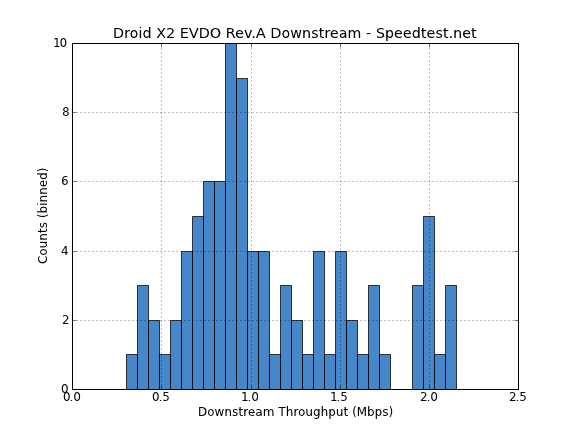
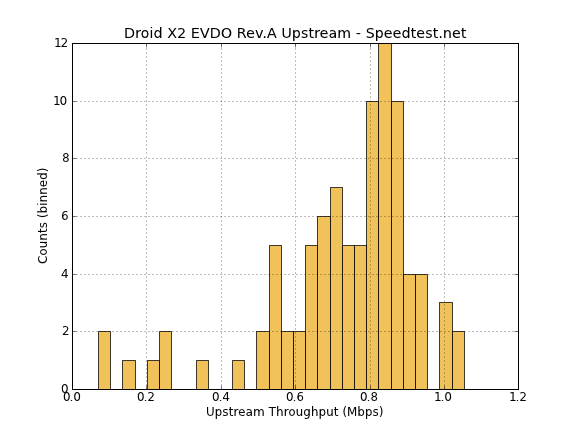

I ran just shy of 100 speedtests on the X2 and created histograms as always. Let me just say that it’s hard coming down off of LTE’s order of magnitude faster performance to EVDO Rev.A, seriously. Downstream performance is between 0.5 and 2 Mbps, about what I’m used to seeing for Verizon’s EVDO Rev.A network. Upstream is centered around an admittedly fast 0.8 Mbps. Latency has a bunch of erroneous results clustered down in the single digit ms response times which are just the speedtest.net application glitching out for some reason.
I neglected to put the X2 through our attenuation test suite, but again the device has receive diversity with cellular antennas at the top and bottom of the handset and should perform just as well as the first device. Likewise I didn’t notice any unwarranted drops in signal while using the handset and holding it. Over in field test (##program followed by 000000), the X2 reported signal usually within 1-2 dBm of the original Droid X.
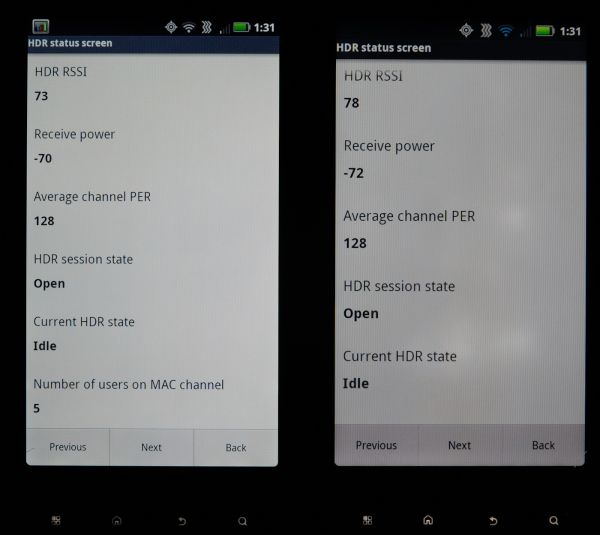 Left: Droid X2, Right: Droid X
Left: Droid X2, Right: Droid X
If you’ve been reading any of our smartphone reviews, you should be able to guess what WLAN and BT chipset is inside the Droid X2. Yes, it’s another smartphone with Broadcom’s BCM4329 combo chip, which means it has 802.11n single stream support on 2.4 GHz.
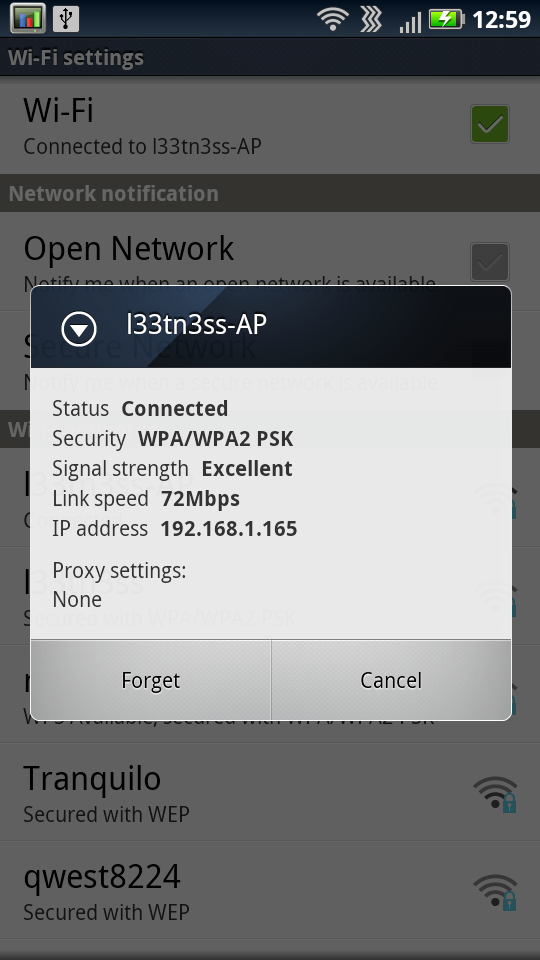
Performance is pretty speedy on our WiFi transfer test which consists of a 100 MB PDF being downloaded from a local server. WiFi range is also virtually unchanged from the Droid X, again I walked around my house with RSSI visible and watched the X and X2 sit within 1-2 dBm of each other, odds are it's the same antenna inside.
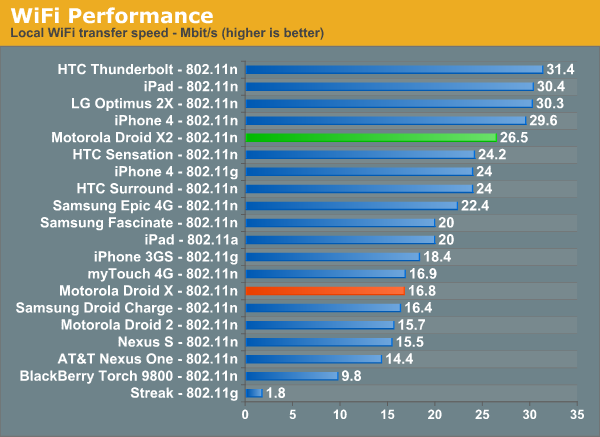
Things have indubitably sped up in part due to the X2's WLAN stack giving the 72 Mbps short guard interval rate instead of 65 Mbps long guard interval 802.11n speeds on the X.










72 Comments
View All Comments
HangFire - Thursday, July 7, 2011 - link
When are you going to review the Charge? Now, there's a screen!HangFire - Thursday, July 7, 2011 - link
Oops I see it has been reviewed, but it is missing in the third comparison graph- Contrast- on page 2.HangFire - Thursday, July 7, 2011 - link
Page 5? I'm sorry I'm used to MODERN comments section with at least a 60 second edit feature.Brian Klug - Thursday, July 7, 2011 - link
It isn't missing, it simply isn't included. The effective contrast of the SAMOLED+ panels is undefined (divide by zero).-Brian
Vepsa - Thursday, July 7, 2011 - link
What app do you show in the GPS testing screenshots?Brian Klug - Thursday, July 7, 2011 - link
I like to use GPS Test Plus, it does a decent job.-Brian
cditty - Thursday, July 7, 2011 - link
No reason to upgrade... I bought my Droid X for .01 from Amazon when I rid myself of the craptastic AT&T in my market.It is the best phone I ever had (I was an iPhone 4 user on AT&T). Verizon's network is what makes me say that, because ALL of the phone works ALL of the time (calls & data).
The original X is plenty fast. My next upgrade will be when my market goes LTE (a long way off). By then, there will be some great phones to be excited about. Funny how phones are the new *upgrade* hobby for old school computer enthusiast.
silow675 - Thursday, July 7, 2011 - link
Brian I think you have the best mobile handset reviews. Great work on including thorough reviews on mobile displays - something lacking in most mobile reviews.Spoelie - Thursday, July 7, 2011 - link
That thing looks hideous compared to recent HTC ventures, like some 80's throwback.Mind you, I'm not talking about performance or usability or screen quality or ... It's purely my own opinion on physical styling of the device.
jonup - Thursday, July 7, 2011 - link
Well, we spent the 90s and the better part of the last decade making phones smaller and more portable... and then all the effort went down the drain.You can thank Apple for that. After the iphone everyone try better them with bigger and heavier phone. Remember, in America bigger is better!